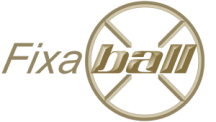
Technicals: Machine Screws
Share
What is a Machine Screw?
A machine screw is a fastening device similar to a bolt but is always fully threaded (making it a screw with a pozidrive, phillips or slotted head). Machine screws are driven in clockwise with a screw driver to match the recess which allows it to be turned. It is used to fasten metal or plastic components together that are pre threaded and not expected to withstand a heavy load/ force. Machine screws fasten machines, vehicles, mechanical tools, phones, electrical appliances and electronic devices.
Machine Screw Thread Types
Machine Screws can be found in all thread types including, Metric, Imperial Unified (American) Course, Imperial (English) B.A, BSW and BSF.
Machine Screw Head Types
Machine Screw Drive Types
- Phillips/ Cross Drive
- Pozi/ Star Drive
- Slotted Drive
- Torx Drive
Pan Head Machine Screws
Pan head machine screws have rounded top edge and tapered sides, with a flat underside. the larger diameter head increases the contact and distribute more load, reducting the need for washers.
Pan heads are used when the fastener doesn't need to be flush with the surface or when the adjoining surface is too thin for a countersunk head. Pan head machine screws are most often found with a pozidrive, slotted or phillips drive recess.
Countersunk Machine Screws
Countersunk head screws are also called flat head screws and are very commond due to giving flush surfacing when fastened. The connecting surface needs to be pre countersunk with a 120' countersunk drill. This angle decreases depending on the thickness of the material being fastened and the gauge diameter of the screw. e.g. M20 machine screw will have a 90' taper under the head. This screw is most commonly used in component assembly where you want to be able to hide the screw head, maintaining unbroken lines for uniformity where dirt cannot deposit.
How do you measure a countersunk fixing or fastener?
Fixing and fastener length refers to the length of the material which contacts the joining materials/ parts. So, as a countersunk head sits below the surface of the joining materials/ parts, the length is from end to end.
Cheese Head Machine Screws
Cheese head screws have a slightly smaller diameter than the pan or round head. The head resembles a cheese, has less of a round on the top edge and has no taper when compared with the similar pan head. The smaller diameter head increases the pressure applied to the smaller area and can be assembled close to flanges and raised surfaces. used most commonly in electrical applications.



